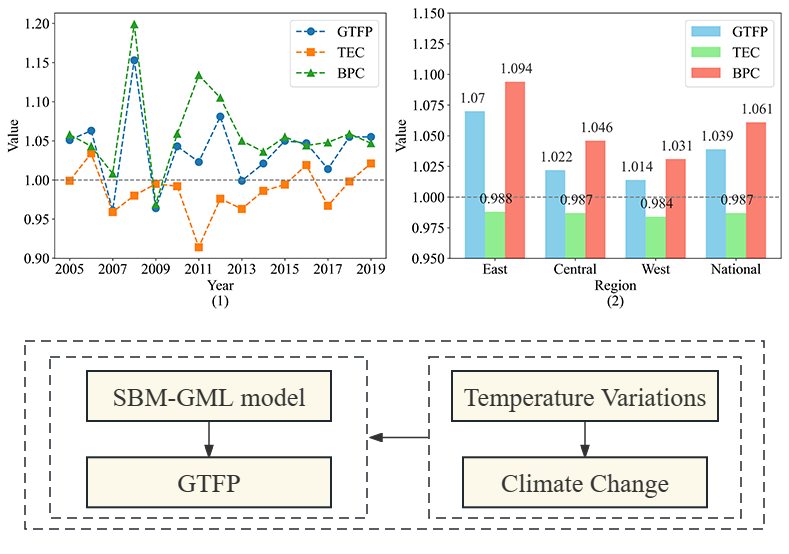
In the process of China's transition to high-quality development, the circular economy, as a key strategy for achieving green growth, is of significant importance in addressing climate change and promoting sustainable development. This study employs the SBM-GML model to analyze the Green Total Factor Productivity (GTFP) of 30 provinces in China from 2005 to 2019, exploring the influence of climate change on the development of the circular economy. The research finds that although China's GTFP shows an overall upward trend, indicating some achievements in the circular economy, the performance in the eastern region significantly outperforms other regions, with technological progress being the primary driver of growth. The impact of climate change on GTFP varies with temperature changes and exhibits differentiated characteristics in different regions. Based on these findings, this paper puts forward a series of policy recommendations aimed at strengthening the practice of the circular economy, enhancing resource utilization efficiency, reducing greenhouse gas emissions, and addressing the challenges of climate change through promoting green low-carbon development, optimizing industrial structure, and formulating adaptive environmental regulations.
Total file downloads: 25